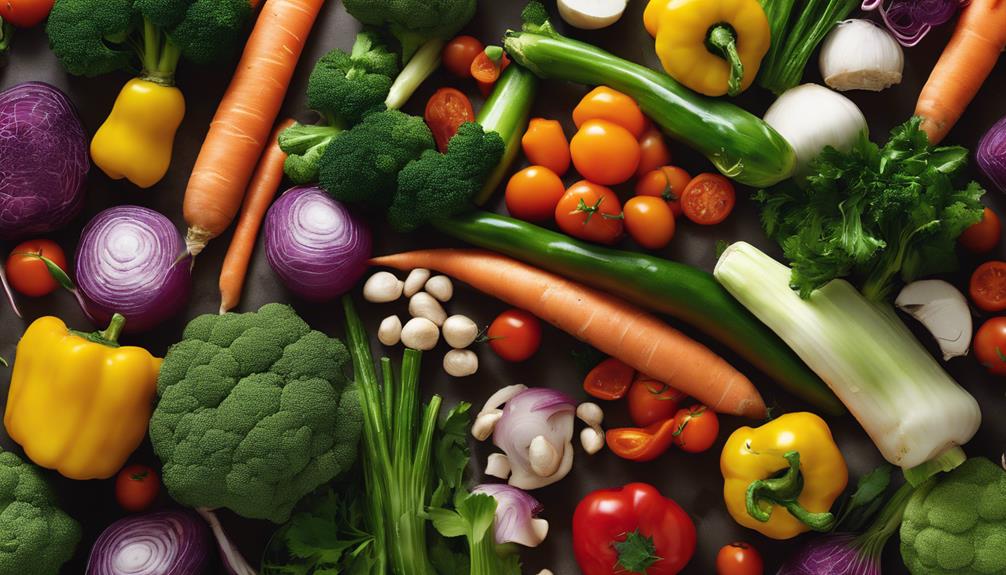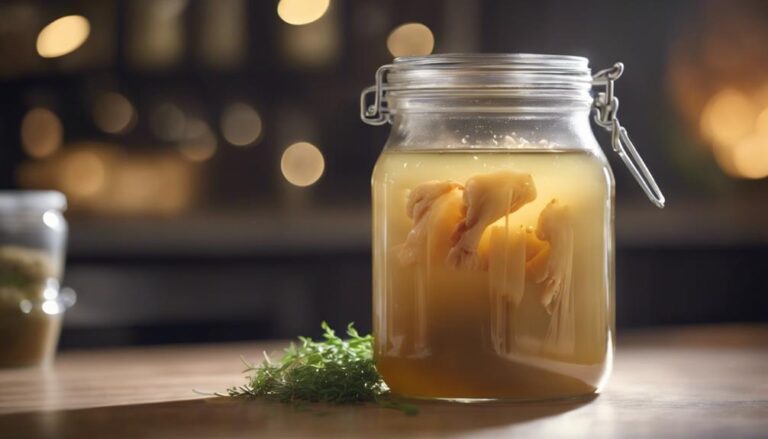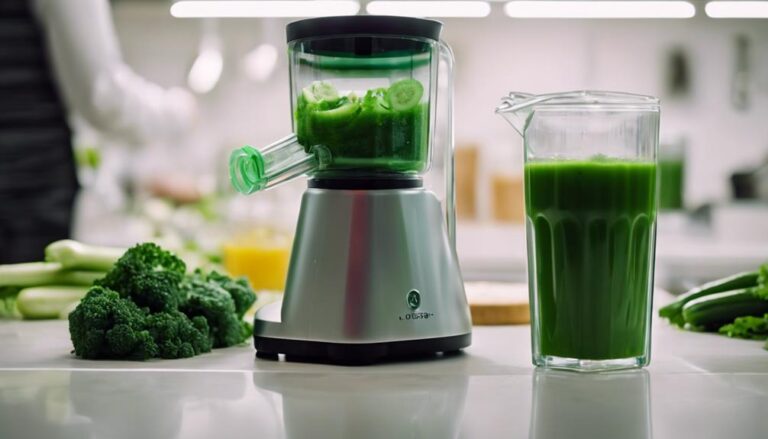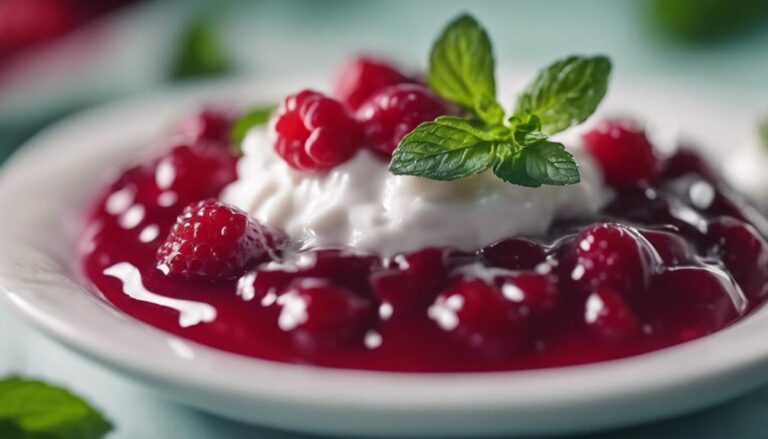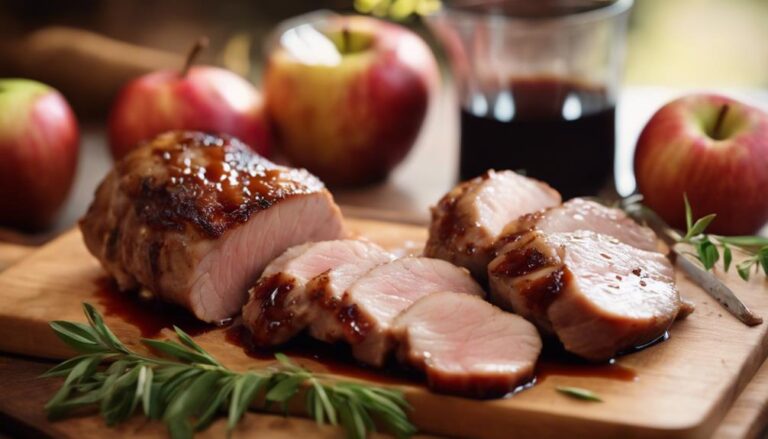Sous Vide Coconut Curry With Seasonal Vegetables
Indulge in a flavorsome Sous Vide Coconut Curry loaded with fresh seasonal veggies. Explore the full potential of sous vide cooking to create a vibrant and satisfying meal. Elevate your taste buds with this creamy, well-balanced dish. Experience a harmonious blend of spices and textures in every bite. Add your twist to spice levels for a personalized culinary journey. Master the art of tailoring flavors with this versatile recipe. Discover the endless possibilities of sous vide cooking to craft a delicious and fulfilling meal. Let your senses savor the fusion of coconut, curry, and vegetables. Your culinary adventure awaits with Sous Vide Coconut Curry and the opportunities it brings.
What You Will Learn Here
- Customize spice levels with green curry paste and coconut milk.
- Use seasonal vegetables for freshness and variety.
- Sous vide method enhances flavors and textures.
- Coconut milk creates a rich and creamy base.
- Enjoy a versatile dish tailored to dietary preferences.
Culinary Origins of Curry
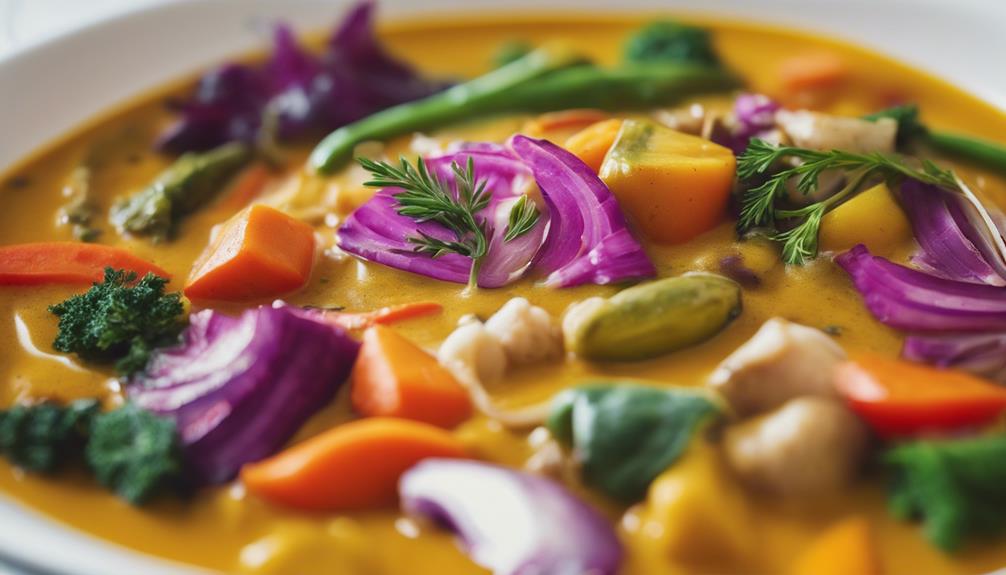
Curry's global influence spans centuries, evolving into a diverse array of regional varieties. The evolution of curry is marked by the distinct blends of spices and herbs found in dishes like Thai green curry or Japanese curry.
Understanding the culinary origins of curry sheds light on its rich history and the unique flavors it brings to different cuisines.
Curry's Global Influence
With its origins rooted in South and Southeast Asia, curry has evolved into a culinary cornerstone with diverse variations found around the globe. Thai curry, known for its vibrant flavors and aromatic ingredients like lemongrass, galangal, and kaffir lime leaves, has made a significant impact on global cuisine.
Green curry paste, a key component in Thai green curry, has become a popular choice for chefs worldwide looking to infuse dishes with a spicy and fragrant twist. The global influence of curry can be seen in the fusion of flavors and techniques across different cultures, showcasing a blend of traditional and modern culinary practices.
Coconut, commonly used in Thai and Indian curries, adds a rich and creamy element to dishes, further enhancing the depth of flavors in this beloved dish.
Evolution of Curry
The culinary evolution of curry traces back to its origins in the Indian subcontinent, where it laid the foundation for diverse regional adaptations and flavor profiles.
Thai green curry, a variant of this dish, incorporates Thai green curry paste, coconut milk, and seasonal vegetables like asparagus, carrots, and spinach. The use of coconut milk in Thai green curry adds a creamy richness to the dish, balancing the spiciness of the curry paste.
Seasonal vegetables not only contribute to the visual appeal of the dish with their vibrant colors but also provide a variety of textures and nutritional benefits.
This evolution showcases how curry has transformed over time, adapting to different regions and ingredients while maintaining its essence as a flavorful and aromatic dish.
Regional Curry Varieties
Originating in the Indian subcontinent, curry has evolved into a diverse array of regional varieties, each showcasing unique culinary traditions and ingredients.
Thai green curry stands out for its vibrant green color and fresh herb infusion, using green curry paste with ingredients like green chilies, lemongrass, and galangal.
Indian red curry, on the other hand, features a blend of spices such as cumin, coriander, turmeric, and garam masala, creating the complex flavors found in dishes like chicken tikka masala.
Japanese curry, influenced by the British, typically includes potatoes, carrots, and onions in a sweeter, thicker curry sauce served over rice or with breaded cutlets.
These regional curry varieties reflect local cultures, ingredients, and culinary practices, offering a diverse range of interpretations worldwide.
Key Curry Spices
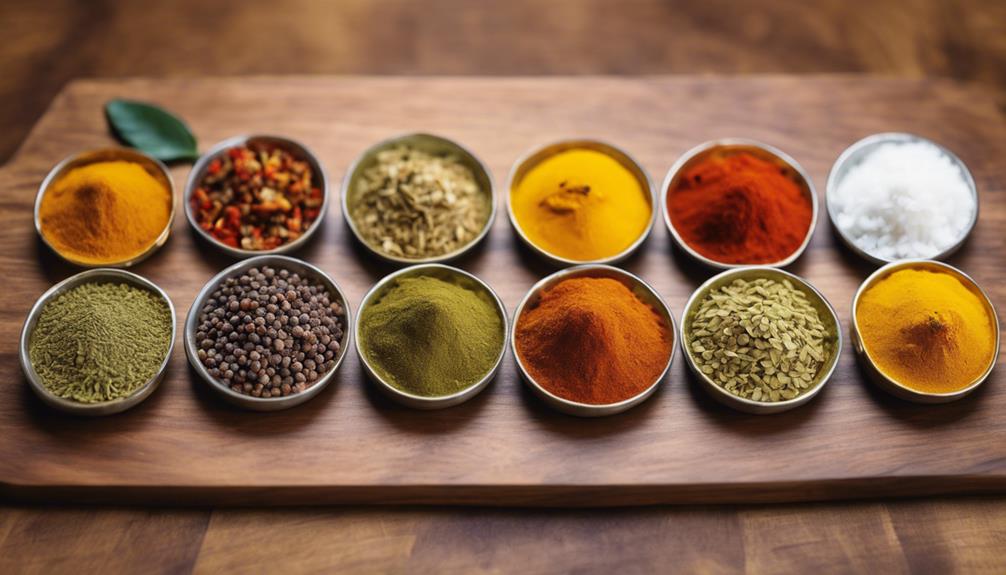
Balancing the key curry spices is essential for achieving the authentic taste and depth of flavor in Thai coconut curry dishes. When preparing your coconut curry, keep in mind the following key spices:
- Lemongrass: Adds a revitalizing citrusy note and subtle aroma to the curry.
- Galangal: Provides a unique essential flavor that's slightly peppery and floral.
- Kaffir Lime Leaves: Imparts a distinctive citrus fragrance and a hint of bitterness to the dish.
These spices, along with coriander and cumin, form the backbone of traditional Thai coconut curry recipes. To capture the true essence of Thai cuisine, understanding how to balance these flavors is important.
While regional variations may exist, the harmonious blend of these key curry spices is what sets Thai coconut curry apart and gives it its signature taste. Experiment with different ratios to find the perfect balance that suits your palate and brings out the authentic flavors of this beloved dish.
Sous Vide Green Curry
When exploring sous vide green curry variations, consider options like:
- Beef and eggplant
- Shrimp
- Spicy coconut chicken curry
Each variation offers a unique blend of flavors and textures, showcasing the versatility of green curry in sous vide cooking.
Experimenting with different protein and vegetable combinations can elevate your green curry dishes to new levels of culinary delight.
Beef and Eggplant Variation
For a delectable twist on green curry, consider the beef and eggplant variation cooked sous vide style.
- The sous vide technique guarantees the beef is tender and cooked to perfection, preserving its natural juices and flavors.
- Eggplant acts as a sponge, soaking up the aromatic green curry flavors, contributing a rich and savory taste to the dish.
- The marriage of beef and eggplant creates a hearty and satisfying meal, offering a unique fusion of textures and tastes.
This variation allows for endless customization, enabling you to experiment with different vegetables and protein options to tailor the dish to your personal preferences. So, immerse yourself in the world of sous vide green curry with beef and eggplant for a culinary adventure that delights the taste buds.
Green Curry With Shrimp
Guaranteeing perfect texture and flavor, Sous Vide Green Curry with Shrimp involves precisely cooking shrimp in a vacuum-sealed bag seasoned with green curry paste, coconut milk, and other key ingredients.
- The shrimp is carefully seasoned with Thai curry paste and coconut milk, enhancing its natural taste.
- Cooking the shrimp sous vide guarantees even cooking and prevents overcooking, maintaining its juiciness and tenderness.
- The green curry sauce adds a spicy and aromatic kick to the dish, perfectly complementing the sweetness of the shrimp.
Spicy Coconut Chicken Curry
Achieving perfect tenderness and flavor, sous vide green curry chicken guarantees precise and consistent cooking results. The green curry chicken infuses succulent chicken with a harmonious blend of spicy green curry paste and creamy coconut milk.
Sous vide cooking guarantees precise and consistent cooking results for the green curry chicken. The green curry paste provides a spicy kick, balanced by the creamy richness of coconut milk. Seasonal vegetables like bell peppers, zucchini, and fresh herbs add freshness and flavor to the dish.
Enhancing Curry Flavor Profiles
To enhance the flavor profiles of your coconut curry, consider incorporating fresh herbs like basil and cilantro. Experiment with a variety of vegetables such as bell peppers and zucchini. Adjust the spiciness level using different curry pastes or Thai chiles. These techniques can help you create a more personalized and complex taste experience in your dish.
Flavor Enhancing Techniques
For an elevated depth of flavor in your coconut curry sous vide, consider experimenting with various curry pastes like green, red, or Panang. These different pastes will bring unique spice blends and complexities to your dish. To help you choose the right curry paste, here's a comparison table:
| Curry Paste | Flavor Profile |
|---|---|
| Green | Fresh, herbaceous, medium heat |
| Red | Rich, slightly sweeter, high heat |
| Panang | Nutty, mildly spicy, creamy texture |
Ingredient Pairing Suggestions
Experimenting with different seasonal vegetables alongside your coconut curry sous vide allows for a dynamic interplay of flavors and textures.
The vibrant and fresh nature of seasonal vegetables such as asparagus, carrots, and spinach complements the rich and creamy coconut curry, enhancing both taste and visual appeal.
By incorporating in-season vegetables, you guarantee the highest quality and best flavor for your dish.
The customizable aspect of seasonal vegetables provides the freedom to tailor the coconut curry to your preferences and dietary needs.
Whether you prefer a crunchier texture from bell peppers or a softer bite from zucchini, the versatility of seasonal vegetables allows you to create a personalized and delicious coconut curry experience.
Spice Level Adjustments
Enhance the flavor profile of your coconut curry by adjusting the spice level to suit your preferences and desired intensity. When tweaking the spice level of your coconut curry, consider the impact of ingredients like green curry paste, chili peppers, and coconut milk. Here's a table to guide you on how these components affect the overall spiciness of your dish:
| Ingredients | Effect on Spice Level | Tips |
|---|---|---|
| Green Curry Paste | Increases heat and intensity | Add more for a spicier curry. |
| Chili Peppers | Varies based on type and amount | Experiment with different peppers for desired spice. |
| Coconut Milk | Helps mellow out heat while maintaining flavor | Use to balance spiciness without losing taste. |
Customizing the spice level allows you to tailor the coconut curry to your taste preferences while maintaining its delicious flavors.
Final Thoughts
In conclusion, the Sous Vide Coconut Curry with Seasonal Vegetables offers a harmonious blend of flavors and textures that make it a versatile and satisfying culinary experience. The coconut curry, infused with the sous vide cooking method, provides a rich and creamy base that complements the freshness of the seasonal vegetables.
This dish showcases the benefits of sous vide cooking, ensuring that each bite is bursting with well-balanced flavors. The customizable nature of this recipe allows for endless variations to suit different dietary preferences, making it a go-to option for various lifestyles.
Frequently Asked Questions
Do You Cook Vegetables Before Putting in Curry?
You enhance vegetable texture, curry consistency, and flavor infusion by pre-cooking. Control cooking time, pair ingredients strategically. Blending pre-cooked and raw veggies can offer diverse textures and flavors. Soften potatoes and roots for better flavor absorption.
What's the Difference Between Massaman and Panang Curry?
Massaman curry showcases milder, sweeter flavors influenced by Persian and Indian cuisines in Thai cuisine, featuring potatoes and peanuts. Panang curry, richer and spicier, boasts a traditional Thai taste with kaffir lime leaves and shrimp paste.
What Is the Difference Between Red and Green Curry and Panang?
Red, green, and panang curry paste variations provide distinct flavor profiles. Red includes red chilies; green, green chilies; panang, peanuts. Ingredient differences: red has red bell peppers, green has green bell peppers, panang has beef or pork. Spice levels vary due to regional influences.
How to Make Thai Coconut Curry Thicker?
To make your Thai coconut curry thicker, use full-fat coconut milk for a creamy consistency. Add cornstarch slurry for thickening. Pureed vegetables like squash enhance flavor and texture. Adjust the curry paste to coconut milk ratio for desired thickness.
Conclusion
To sum up, sous vide coconut curry with seasonal vegetables offers a flavorful and aromatic dish that showcases the rich culinary history of curry.
By utilizing key curry spices and the sous vide cooking method, the dish enhances the natural flavors of the vegetables and creates a harmonious blend of tastes.
Experimenting with different ingredients and techniques can further elevate the curry flavor profiles, making it a versatile and satisfying dish for any occasion.
